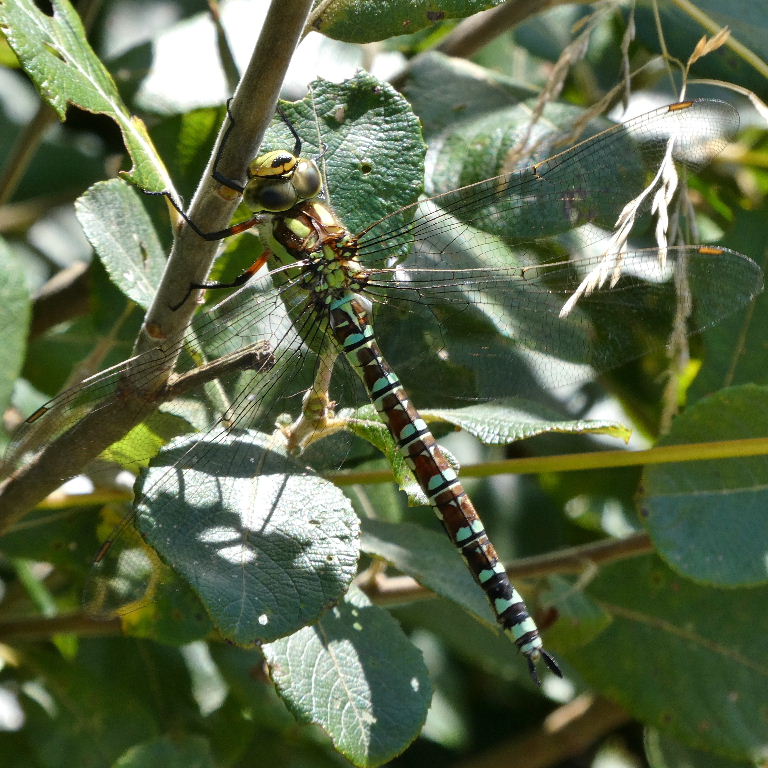Southern Hawker Dragonfly Aeshna cyanea


The Southern Hawker Dragonfly, one of the large "hawkers," has a characteristic "V" shape in the top segment
of its abdomen above a greeny-blue, sideways "B" shape.


While the female Southern Hawker is greener (less blue) than the male, the photo above right is of a (new) male camouflaged in green:
the male has a slim waist and anal claspers.
 This female (NW London) has red thighs.
This female (NW London) has red thighs.
 She has a fatter "waist".
She has a fatter "waist".
 Ladies like flowers (hunting butterflies).
Ladies like flowers (hunting butterflies).
 Females have green eyes (no blue).
Females have green eyes (no blue).
 The same one as on the left - she has light brown thighs.
The same one as on the left - she has light brown thighs.
 This female also has red thighs; photo by Kate Dalziel on the Lizard, Cornwall.
This female also has red thighs; photo by Kate Dalziel on the Lizard, Cornwall.


Head, thorax and waist close-up, with full and with blurred backgrounds.

A very green female.



The "eyes" on the thorax are another distinguishing feature.


A Southern Hawker Dragonfly newly-emerged from the exo-skeleton (exuvia) of its nymph (larval) phase.
 Initially wings are held together like a damselfly.
Initially wings are held together like a damselfly.
 Then wings are spread to dry.
Then wings are spread to dry.
 The adult.
The adult.
 Southern Hawker nymph, a water-dwelling larva feeding on pond insects for its 3 years of aquatic life
Southern Hawker nymph, a water-dwelling larva feeding on pond insects for its 3 years of aquatic life
 The nymph climbs out of the water and the exoskeleton is left once the adult dragonfly has emerged and flown
The nymph climbs out of the water and the exoskeleton is left once the adult dragonfly has emerged and flown
 The nymph mouthparts
The nymph mouthparts
The redundant exoskeleton of the dragonfly nymph is variously referred to as exuvium/exuvia (neuter singular/plural) and exuvia/exuviae (feminine).
The latter seems more usual.


